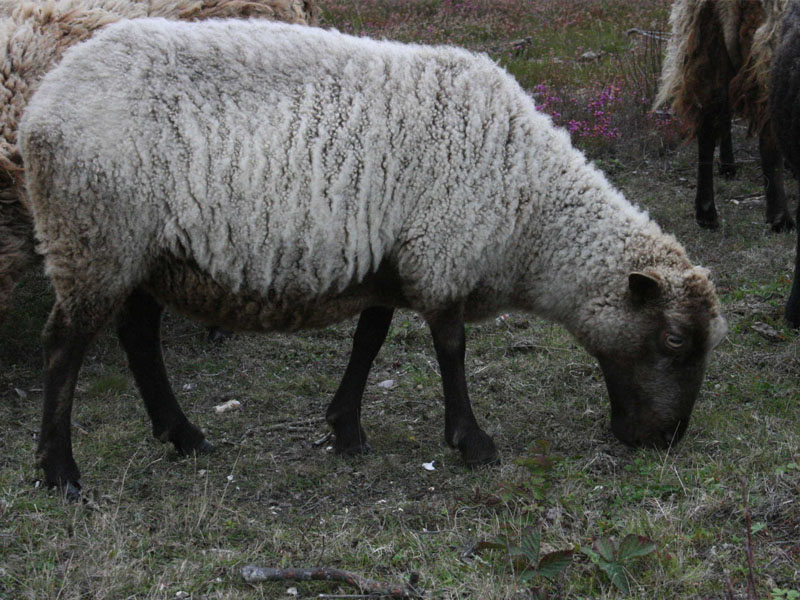Shetland Wool
Variety: Shetland Wool
Fibre Origin: Shetland sheep.
Provenance: Shetland Islands, United Kingdom.
Characteristics: Soft, light fibre, with a diameter between 23 and 31 microns.
- The natural colour of the wool is dark grey, but can also be white, brown or black.
- Used for the production of fine and delicate fabrics.
From a genetic point of view, the Shetland sheep (Scotland, UK) is part of the short-tailed sheep of Northern Europe. It also has a strong link with the Scottish Dunface: the majority of specimens until the end of the 18th century, are now extinct.
History
The origins of this type of wool go back to about 500 A.D. It was then that the Vikings settled in Scotland and crossed Norwegian sheep with native sheep (possibly Soay). This is why Shetland closely resembles the Norwegian Spaelsau.
Despite the harsh Scottish climate and the limited pasture available, these sheep adapted very well to their environment. Although farmers used them mainly for meat, they soon became highly valued for their excellent wool. Thus, in the Middle Ages, textile exports from the islands became commonplace.
At the dawn of the 20th century, uncontrolled cross-breeding of this species with other breeds seriously endangered its purity, which was detrimental to wool production. The Shetland Flock Book Society was founded in 1927 to preserve the breed.
The breed became endangered in the 1970s. However, thanks to the efforts of small farms, their survival is now out of danger. In fact, it is estimated that there were around three thousand in the UK in 2015.
NATURAL PROPERTIES
Shetland wool is noted for its exceptional qualities. Indeed, its warmth and softness shine through, to the extent that it is considered to be the finest in Britain.
As early as 1790, Sir John Sinclair claimed that this natural fibre was as soft and shiny as silk, as strong as cotton, as white as linen and as warm as wool.
- The most distinctive feature of this wool lies in the heterogeneity of its fibres. It is this diversity of thicknesses and sizes that gives it an extraordinarily fluffy, light and elastic feel.
- Colour: The flagship of Shetland Wool
- Shetland wool is well known for having almost all natural colours.
- Thanks to its wide range of colours, it is possible to work with this fibre without dyeing it (which makes it even softer).
Uses
Warm clothing is one of the most iconic uses of this wool. Indeed, the high level of crimp in the fleece makes it perfect for hand-knitting jumpers and jackets. Such garments stand out for their quality, strength and warmth.
The creativity of local producers in the use of this wool knows no bounds. Sculptures, upholstery, carpets, toys and decorative items are among its most innovative uses.
Benefits
The great variety of shapes and colours of fleece that we can find in these sheep is the key to their versatility. Consequently, this fibre allows the creation of all kinds of products and patterns (such as the Fair Isle and the famous tweed).
This multi-faceted character gives it infinite possibilities in terms of possible uses. That is why, as we have seen, this raw material has been able to transcend the textile industry to serve other purposes.
Shetland wool is considered rustic, which makes it particularly resistant. What's more, garments made from it remain in excellent condition season after season (as long as they are hand-washed without harsh rubbing).
In conclusion, Shetland wool is a unique, high-quality fibre that has been prized for centuries. Traditional shearing and processing methods have been passed down from generation to generation in Shetland, ensuring that the wool remains authentic to its roots. As consumers become more conscious of the materials they use, Shetland wool offers an environmentally friendly option that supports local communities and sustainable practices.



Users Reviews